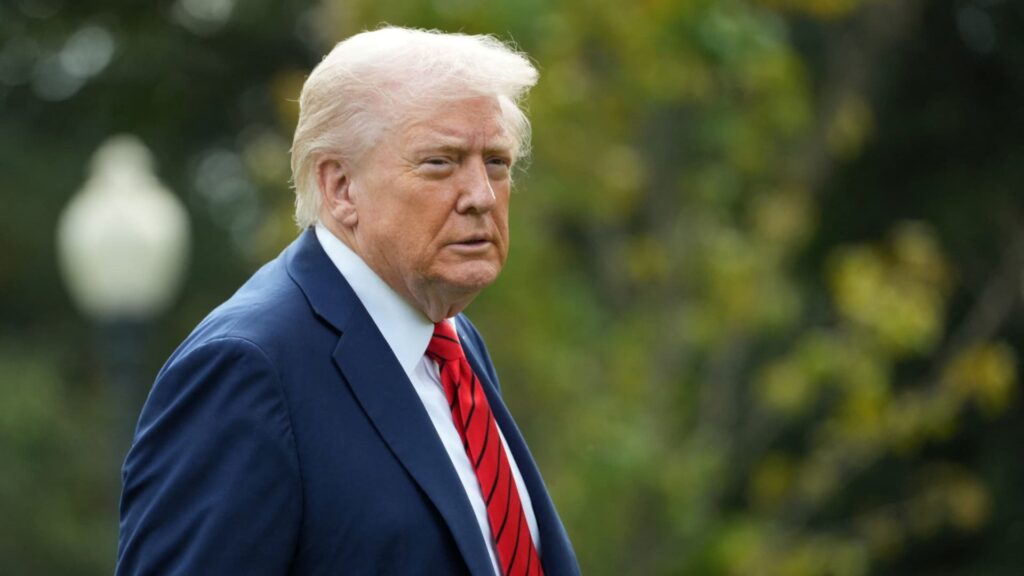US President Donald Trump arrives at the White House after completing his annual physical at Walter Reed National Military Medical Center in Washington, DC, USA, on October 10, 2025.
Ken Cedeno | Reuters
President Donald Trump has vowed that only “Democratic agencies” will be eligible for full-time staff cuts amid the government shutdown, but cuts by previous administrations have affected programs and services across partisan lines.
The White House on Friday issued thousands of troop reduction notices, known as RIFs.
Approximately 4,200 federal employees in at least eight departments were affected.
The department with the biggest job cuts was the Treasury Department, where about 1,450 employees received RIF notices.
The RIF there included cuts to all 83 staff at the Community Development Financial Institutions Fund, which invests in public-private partnerships that support low-income communities, The Wall Street Journal reported Monday.
CDFIs have strong bipartisan support in Congress. In March, after President Trump signed an executive order targeting cuts to the fund, a group of 23 senators sent a letter to Treasury Secretary Scott Bessent reaffirming “the important role the fund plays in our communities.”
The letter noted that for every dollar provided to CDFIs, “at least an additional $8 in private sector investment is generated.”
Signatories included a group of Republican senators, including Mike Crapo of Idaho, Tim Sheehy of Montana, Bill Cassidy of Louisiana, Cindy Hyde-Smith of Mississippi, and Jim Justice of West Virginia.
In late July, a longer list of Republican and Democratic senators called on Russell Vought, director of the White House Office of Management and Budget, to quickly provide CDFIs with funds appropriated by Congress.
CDFI employees who received the RIF notice on Friday were told that their services would end on Dec. 13, the newspaper reported.
The second-highest number of RIFs were issued to Department of Health and Human Services employees, with more than 1,300 employees reportedly affected.
However, the layoffs of about 700 DHS employees working at the Centers for Disease Control and Prevention were reportedly rescinded the next day.
However, other laid-off employees, including those in the CDC’s Washington field office, injury center and violence prevention division, will not be rehired, the New York Times reported.
At the Department of Education, 466 employees received RIFs.
Becky Pringle, president of the National Education Association, wrote on social media Friday that hundreds of education departments are impacting special education services, school grants and more.
“Special education oversight. Grants for schools in need. Civil rights protections. Gone,” Pringle wrote. “This administration is destroying our education system from within.”
The Department of Special Education and Rehabilitation Services, where some staffing has reportedly been cut, is one of the departments covered by Project 2025, the government’s right-wing manual for major reforms.
Some Republican senators have voiced opposition to the Trump administration’s dismissal.
Sen. Susan Collins (R-Maine), chair of the Senate Appropriations Committee, said in a statement Friday that she “strongly opposes” Vought’s attempt to permanently lay off furloughed workers, although she blamed Senate Minority Leader Chuck Schumer (D.N.Y.) for the government shutdown.
“There is no question that this is premature and is yet another example of the current administration’s punitive actions against federal employees,” Sen. Lisa Murkowski (R-Alaska) wrote in the X-Post on Friday.
“Layoffs of federal employees as a result of the government shutdown will further harm hardworking Americans who have dedicated their lives to public service and will jeopardize the mission of government agencies once we finally reopen the government,” she wrote.
The Trump administration has blamed Democrats for the government shutdown, which entered its 14th day on Tuesday, and says the layoffs are an inevitable result of the lapse in federal funding, which has not been the case in previous government shutdowns.
At the same time, President Trump touted the possibility of massive cuts as an “unprecedented opportunity” to eliminate parts of the government that Republicans dislike.
The administration has already made clear through the Department of Government Efficiency that reducing the federal bureaucracy is a key priority, but the group’s cuts have fallen short of its initial goals.
The president’s latest firing threats are clearly partisan.
On the second day of the shutdown, President Trump said he was considering temporarily or permanently reducing “Democratic institutions.”
“We’re just cutting Democratic programs,” he said at Thursday’s Cabinet meeting.
Democrats “will get a little taste of their own medicine,” he added.
It was unclear what this meant because federal agencies and programs are not divided by political party.
Trump said during the meeting that these are “very popular Democratic shows that frankly are not popular with Republicans.”

